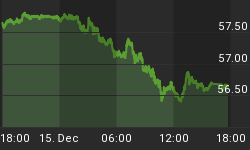File this article from Bloomberg under the "be careful what you wish for" column. The article highlights market sentiment data from Investors Intelligence, and for the first time since March, 2009, there are more bearish newsletter writers than bullish ones. While the article wishes this was a good thing, the entirety of the data series would suggest that it is not so simple.
Figure 1 is a weekly chart of the S&P500 with the Investors Intelligence data in the lower panel. The green line is the bullish percentage and the red line is for the bears. As the article suggests there are now more bears than bulls and of course, this is just another reason why the stock market is going higher. But rather than be wishful let's look at the data in its entirety, and when it comes to Investors Intelligence that is a good thing because the data goes all the way back to 1969.
Figure 1. S&P500/ weekly

So let's construct a simple strategy: let's buy the S&P500 when the number of bears exceeds the number of bulls; this is the red line greater than the green line in figure 1. We will close our position when there are more bulls than bears or when the green line is greater than the red line This is a simple enough strategy that produced the following equity curve. See figure 2.
Figure 2. Equity Curve

Since 1971, such a strategy produced 72 trades; there were 49 winners and 23 losers. The ratio of the average winning trade to the average losing trade was .84. There were fewer losers but they tended to be bigger losses on average than the winners. But look at figure 2 more closely. From 1971 to 1988 this strategy made no money. From 1988 to 2008, the strategy performed admirably (or in a parabolic fashion), but starting in 2008, this strategy suffered its first significant pull back in 20 years.
As you can see, more bears than bulls isn't quite so simple.
















